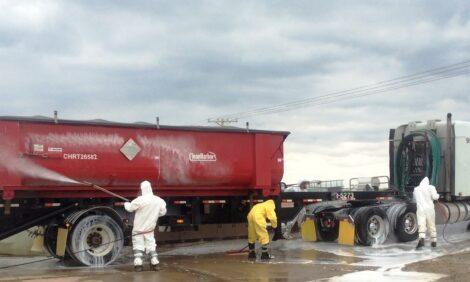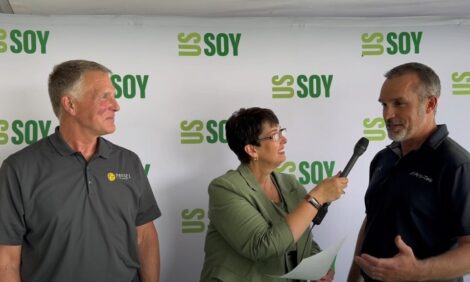



Needle-Free Immunization as Effective as Needle and Syringe Method
By Dr. Phil Willson, Ph.D., Program Manager, Vaccine Development, Vaccine & Infectious Disease Organization. Published by Manitoba Pork Council - This study indicates that immunization by needle-free injection with the needle-free delivery system results in immunity comparable to that provided by conventional intra-muscular injection and may offer improved protection from clinical disease.
Take Home Message
The amount of vaccine remaining on the skin surface post-vaccination with the needle-free method suggested that further studies of needle-free injections could lead to establishment of much smaller effective vaccination doses with this system.
Summary
This study, carried out at the University of Saskatchewan.s Vaccine & Infectious Disease Organization (VIDO), evaluated commercial vaccine delivery to piglets using a low-pressure, needle-free jet injector against intra-muscular delivery and found that resulting immunity in needle-free animals was as good or better than that developed by animals immunized using a syringe and needle. Animals immunized with the needle-free jet injector also experienced milder clinical disease. This work confirmed similar results achieved by researchers using other drugs or vaccines.
Introduction
Vaccination of livestock is crucial to developing specific immune resistance to diseases that otherwise cost producers billions of dollars. Vaccination of livestock with needles - intramuscular and subcutaneous - can incur costs through animal stress, vaccine residues, injection site lesions and broken needles. Needle-free injection offers several benefits over traditional means. Vaccine is dispersed as minute particles in skin and other tissue, greatly increasing exposure to white blood cells, and thus improving vaccine uptake. Entry points are minute, minimizing tissue damage at the injection site. The injector can be loaded for multiple injections and needle stick injuries are eliminated.
Experimental Procedures
Piglets were housed under commercial
conditions for their initial five weeks, then
transported to VIDO where they were housed in
a controlled-temperature and ventilation
isolation room with free access to water and
commercially prepared feed. Piglets of six and
nine weeks of age were vaccinated with
Pleurostar-APPâ either by needle-free jet
injector (NF) administration at 220 psi or
conventional intra-muscular (IM) routes (eight
piglets each).
Piglets receiving the vaccine by IM routes were
injected at the right (primary injection) or left
(booster) neck muscle with a 1x18 ga needle. For
the NF group, the vaccine was delivered to the
same surface location. Amounts of vaccine
remaining on skin surface were quantified.
Blood samples for serological studies to
quantify immune reaction were collected at the
time of first vaccination, second vaccination,
and pre-challenge (days 0, 21 and 28
respectively). At ten weeks of age groups of
pigs from each treatment were challenged for 10
minutes with Actinobacillus
pleuropneumoniae via aerosol in an enclosed
plexiglass chamber. Pigs were clinically
observed for seven days post-challenge and
lung tissue analyzed for presence of A.
pleuropneumoniae lesions.
Results & Discussion
An adverse clinical event in response to
vaccination and blood sampling during the
study was not related to the vaccination
process.
All vaccinated pigs exhibited at least a four-fold increase in antibody titre before challenge. Measurement of two indicators of
immune response (IgG1, IgG2) showed parallel immune reactions to A. pleuropneumoniae antigen OmIA for both groups (NF
and IM) (Figure 1). Both groups also showed parallel immune responses for a second A. pleuropneumoniae antigen, ApxII
(Figure 2).
The amount of vaccine remaining on the skin surface after vaccination was almost 60-fold greater for NF treatment; however the
NF was used in this study without optimization for skin penetration.
In terms of clinical disease, both groups of pigs were protected, and clinical disease was significantly milder in the NF group.

Acknowledgements
Program funding and support was provided by WLT Distributors Inc., Manitoba Pork Council, Sask Pork,
Ontario Pork, Alberta Pork, and the Canadian Research Network on Bacterial Pathogens of Swine.
Source: Manitoba Pork Council - September 2004







